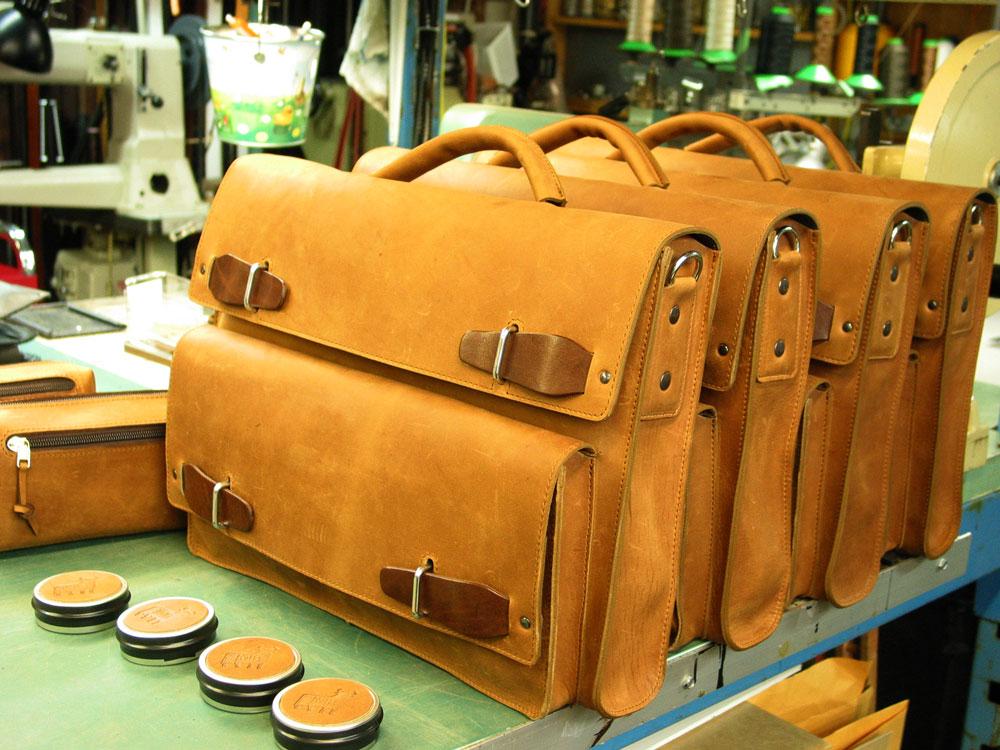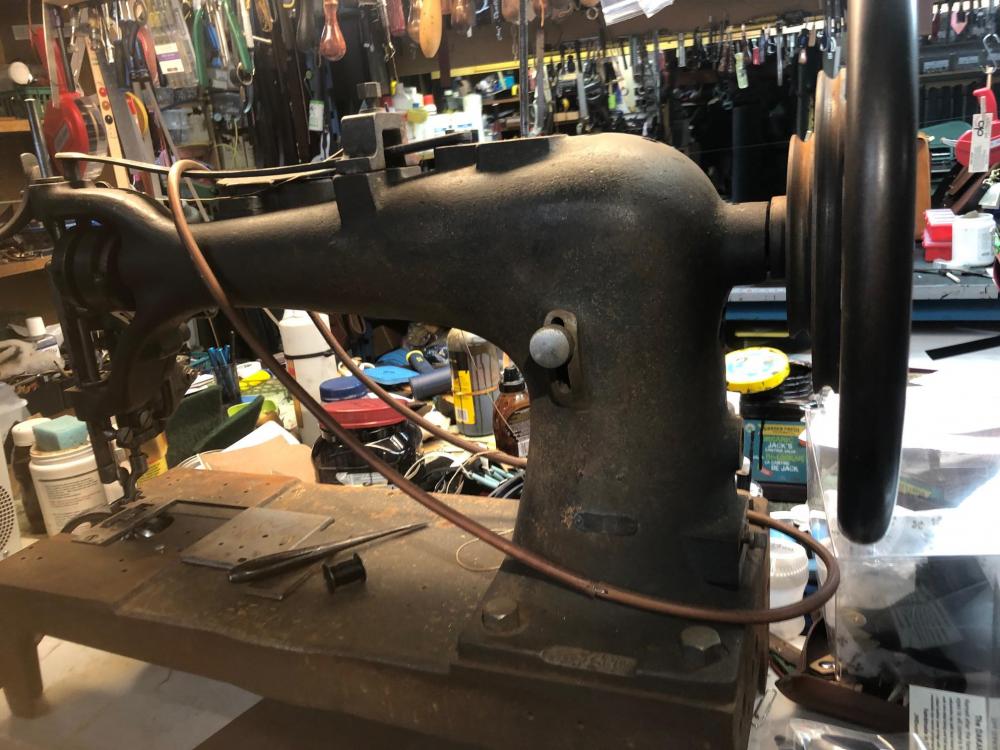
Brooksie
Members-
Posts
14 -
Joined
-
Last visited
About Brooksie
- Birthday May 23
Contact Methods
-
Website URL
jmbleathercom
Profile Information
-
Gender
Male
-
Location
Quebec Canada
-
Interests
Leather craft, bike racing, snowboarding, hockey, learning , Being a DAD
LW Info
-
Leatherwork Specialty
belts, handbags,accessories,home decor
-
Interested in learning about
making handbags,new techniques
-
How did you find leatherworker.net?
online
Brooksie's Achievements

Member (2/4)
-
SO.... after moving a clicker into a new space followed by landscaping to ensure it stays put for a while, I discovered it giving me about 1 ton of pressure. Pulling off the oil bath cover and cycling it with a light load on cutting table it squirted oil from the bottom of the main cylinder. With a bigger load it shot out like a pressure washer. These old Italian clickers are no longer made but I would like any help I can get. I'm hoping to find a lower seal or possibly both since it all has to come apart. Please, does anyone know of an outfit that has advice or seals for this old workhorse. Peace out. James
-
Pfaff 471-755/01 Postbed, Single-needle
Brooksie replied to unionattic's topic in Leather Sewing Machines
Any luck??? I just picked up two of these beasts. No reverse but solid non the less. -
Thanks, I'll work on that tomorrow.
-
I picked up a Pfaff 545 that had sat for the better part of 15 years. It sewed great with 69 thread when I checked it out. It's in great looking condition and the hook is perfect, or at least seems so. After going over it there were lots of things to be cleaned and adjusted, most notably the looseness in the hook drive shaft that connects to the small gear below. It had allot of play and seemed to be where the noise and tension issues were coming from. The hook was lifting under tension at the end of the stitch cycle. The tension issue was that the machine could not sew through 7oz leather without either randomly pulling up to much to pilling the odd ball on the bottom. Now that the play is taken out it sews darn near perfect...accept now in reverse the tension is way to strong on the bottom resulting in an awful looking reverse back tack. So...any tips on correcting this reverse tension would be very much appreciated as this machine has almost been kicked to the curb a few times. Now I see the light at the end of the tunnel. But seriously, I just want to get back to work and start on a more peaceful path with my relationship with this old girl. thank you, James
-
Thank Ziik for the input. I think you help shed light on a simple problem. Up until lately I was unaware of these mechanical activated solenoids. Fun time aside, I just want to get things working. It leaves more free space in the mind for play.
- 21 replies
-
- quick rotan
- eps
-
(and 2 more)
Tagged with:
-
- 3 replies
-
- electorlysis
- singerclass7
-
(and 2 more)
Tagged with:
-
Hello folks, I have my first machine ever a Singer 7-34 with small feet that I want to clean and sell. It was sold to me dipped and stripped of paint. Over the past 20 years it has developed rust, even after applications of wax. My question is. Can I dip the whole machine in an electrolysis bath to clean? Should I remove the hook first. Any input would be welcomed. It runs well and smooth, but I would like it show nicely for the next set of hand to use. cheers and thanks, James
- 3 replies
-
- electorlysis
- singerclass7
-
(and 2 more)
Tagged with:
-
Any luck? I'm in the same boat with a dead mother board. I am told that for $1300 cdn I can have a new efka and about 4 hours rewiring plug connectors. My tech says keep it original, but I say it just needs to work...without all the programs. No reverse lever and thread trimming are tricky things to have built into a motor. Have you had any luck? James
- 21 replies
-
- quick rotan
- eps
-
(and 2 more)
Tagged with:
-
Is this site legit??? Enduro servo motors
Brooksie replied to Brooksie's topic in Leatherwork Conversation
Yes indeed. Thanks for the reply. -
https://www.lratibor.com I was checking out servo motors and came across this site. Prices are too good which prompts the question? Where are they and are they honest? I'm also looking at the Enduro Pro SM645B-2P Servo Motor and I would be using it on a Juki lu 563 for leather running 160 needle. Any input would be very welcomed. The higher wattage is appealing. There is also the SM645-2P. Does anyone know the difference??? Thanks James
-
Edge dye
Brooksie replied to Brooksie's topic in Dyes, Antiques, Stains, Glues, Waxes, Finishes and Conditioners.
They used to call it edge dye. Now it's like edge coat/dye.It was made with de natured alcohol. The benefit was when dyeing edges or holes it did not strike quickly like their classic dyes which are methyl hydrate based. Have you ever dyed an edge just to see it bleed because a fraction of a drop too much was applied? All finished surfaces resist the edge dye a bit so if you spill over or have an accident it's an easy clean up. The regular dye is very harmful to us humans. Just a drop on your skin penetrates you. The vapours are harmful (obviously ) as well. If I use regular dyes, It's outside. Sooooo, I'm trying to recreate the original. It's also great for some of the antique finishes I've developed over the years as well as darkening up laser etched leather. -
Edge dye
Brooksie posted a topic in Dyes, Antiques, Stains, Glues, Waxes, Finishes and Conditioners.
I'm looking to replace Fiebings edge dye that I have used for years. I use it for edge dying and touching up holes. They have discontinued it, so I'm having to recreate it. I need a solvent based pigment and de natured alcohol, I guess. Any suggestions? I would like to know what and where I can find the right pigment. -
Denatured Alcohol
Brooksie replied to Red Cent's topic in Dyes, Antiques, Stains, Glues, Waxes, Finishes and Conditioners.
I'm looking to replace Fiebings edge dye that I have used for years. I use it for edge dying and touching up holes. They have discontinued it, so I'm having to recreate it. I need a solvent based pigment and de natured alcohol, I guess. Any suggestions?




